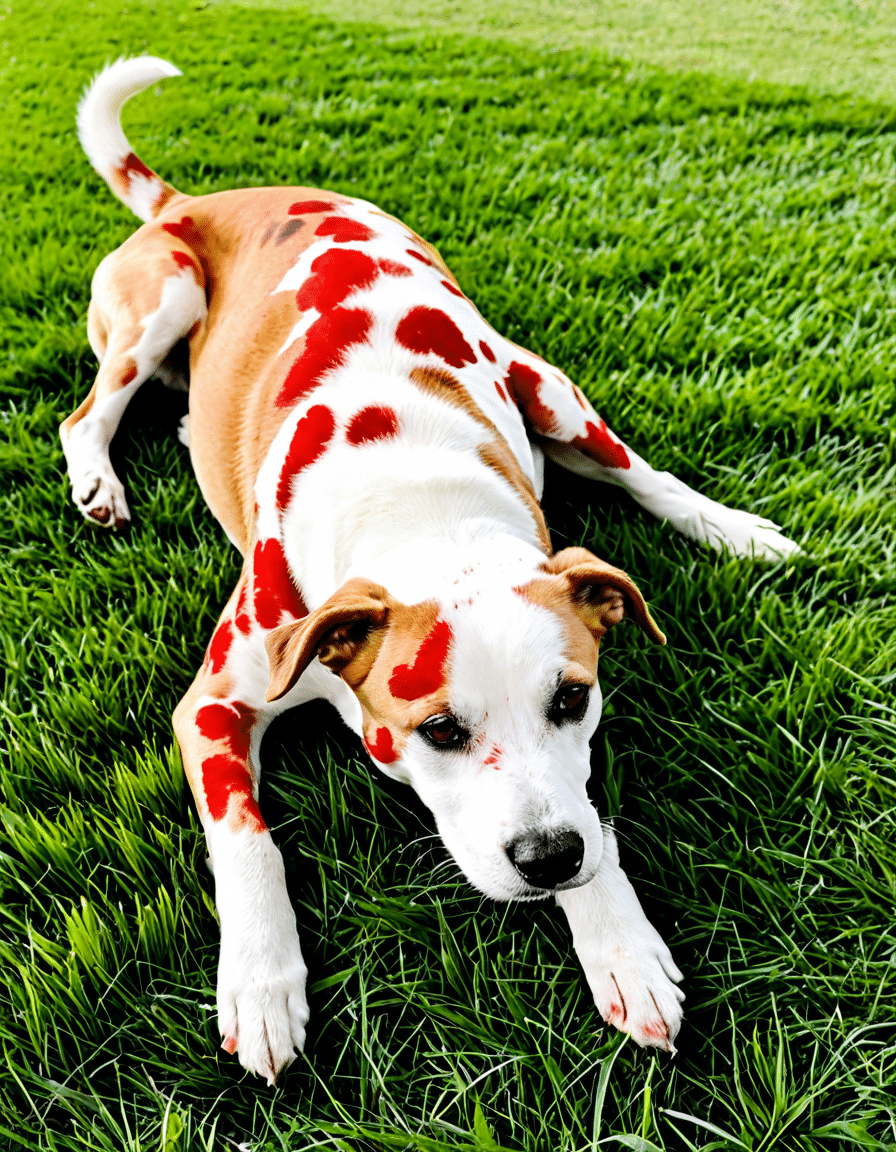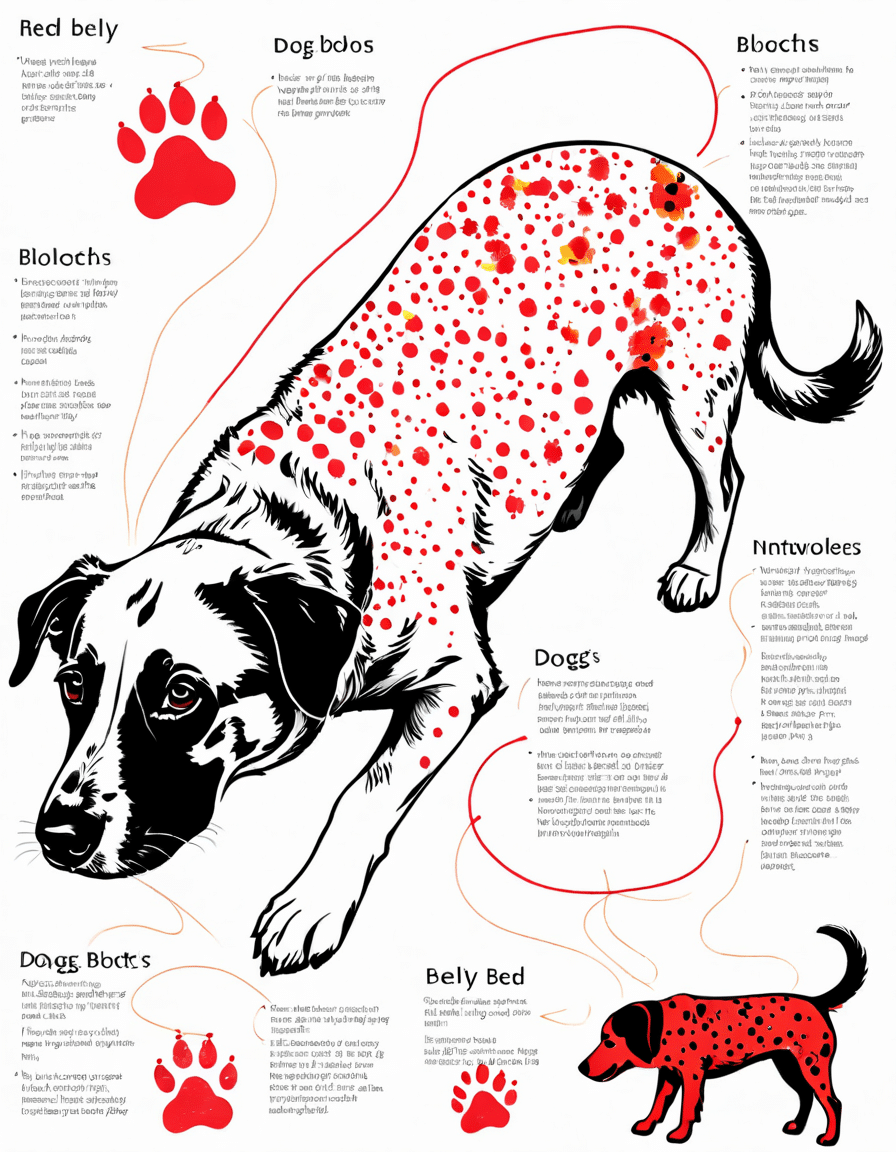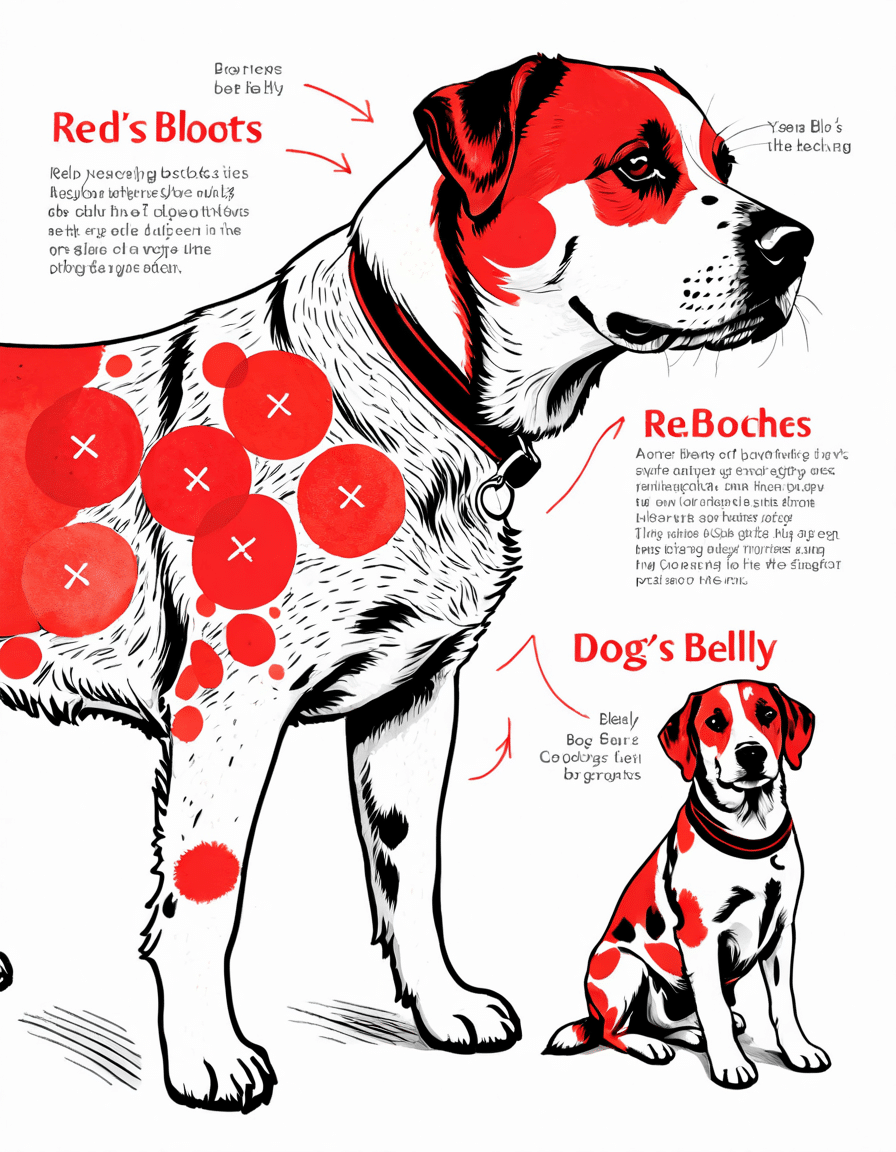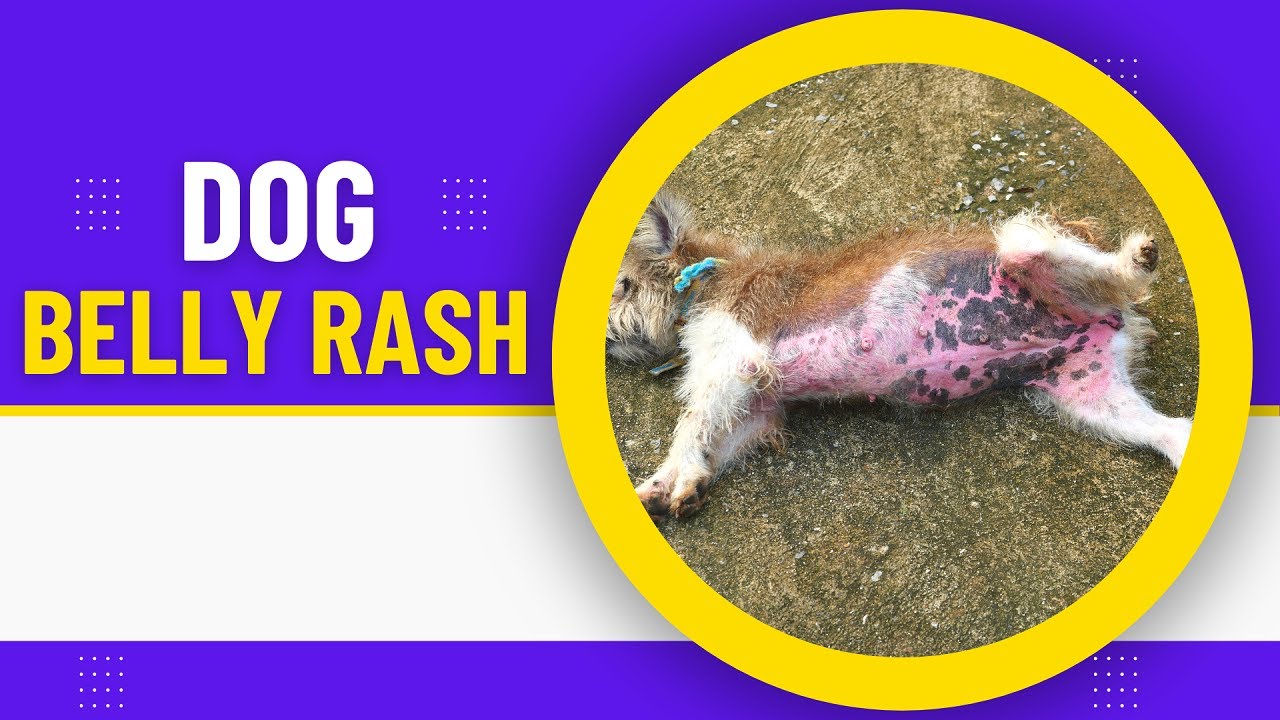Noticing red blotches on your dog’s belly can be alarming. This symptom can stem from various conditions, and knowing what’s behind it helps you tackle the issue effectively. Quick observation and action can spare your furry friend discomfort and lead to appropriate treatments.
In this article, we’ll delve into the top causes behind those pesky red blotches, explore related skin changes like black spots on your dog’s stomach, and remind you of the importance of regular vet check-ups. If you’ve seen these symptoms, stick around to learn all you need to know about keeping your pup healthy and happy!
Understanding Red Blotches on Dog’s Belly
Red blotches on your dog’s belly can signify allergies, infections, or other underlying health issues. It’s crucial to pay attention to any accompanying signs and symptoms. For example, if your Labrador Retriever starts itching uncontrollably while you spot redness around the abdomen, allergies may be at play.
Moreover, different breeds can react in unique ways. A breed like the redtick hound might show skin reactions much faster than others. Rushing to the vet is always wise when you notice these changes, because quick responses can significantly affect your dog’s health.
As alarming as red blotches might seem, remember relief is often just around the corner. With the right knowledge and guidance, you can navigate the confusion and find a solution that works for both you and your furry companion.

Top 7 Causes of Red Blotches on Dog’s Belly
1. Allergic Reactions
Dogs can have allergies just like humans. They might react to various triggers, including food (think gluten or chicken), pollen, or flea bites. For instance, a Labrador might get red blotches on its belly if it eats a grain-based diet that doesn’t sit well. Watch out for excessive scratching or licking, which is often a telltale sign of allergies.
2. Infections and Skin Conditions
Bacterial or fungal infections can lead to red, inflamed patches on your dog’s skin. Take the case of a playful puppy who picks up a fungal infection like ringworm while frolicking outside. Without prompt action, this condition can escalate, leading to discomfort for your pup.
3. Autoimmune Disorders
Some autoimmune disorders, such as Pemphigus, cause swelling and redness. These conditions require veterinary dermatologists’ expertise. If you notice ulcerated areas alongside those red blotches, seek medical attention right away.
4. Parasites
Fleas, mites, and ticks are not just a nuisance; they can lead to intense irritation. Flea allergies are especially common, resulting in inflamed skin on the belly. Your dog might roll around in discomfort, driving home the urgency of checking for these critters.
5. Hot Spots
Hot spots, or acute moist dermatitis, develop from constant licking or scratching due to infection or irritation. This situation commonly arises in dogs with long fur, which traps moisture against the skin. Keeping your dog’s coat clean and dry can help prevent this issue.
6. Contact Dermatitis
Your dog’s belly could become irritated from contact with chemical irritants like cleaning products or certain plants. If Fido rolls in a freshly treated lawn, expect a reaction that might lead to patches of red on his belly. Observing his behavior is vital to prevent further exposure.
7. Hormonal Imbalances
Conditions like Cushing’s disease can affect the skin, leading to red blotches alongside symptoms like thinning skin. If your German Shepherd is losing hair and showcasing red spots, it’s time to make a trip to the vet for hormone level assessments.
Related Concerns: Black Spots and Other Skin Changes
Black Spots on Dog’s Stomach
Black spots on your dog’s stomach can indicate hyperpigmentation, but they may also point to serious issues like melanoma. Keeping an eye on any changes in these spots is crucial, and a vet’s evaluation often brings peace of mind.
Understanding Black Dot in Dog’s Eye
Sometimes, pet owners notice a black dot in their dog’s eye. While this isn’t always connected to skin issues, it’s vital to consult a veterinarian. Pterygium or foreign objects could cause such concerns, and prompt attention ensures your pet’s overall well-being.
Key Signs of Internal Issues: Black Flecks in Stool
While focusing on red blotches, don’t overlook black flecks in stool. This phenomenon can indicate internal bleeding or digestive issues. If you spot these, a vet visit is necessary for proper diagnosis.
Surface Concerns: Black Marks on Dog’s Stomach
Patches or flecks that appear black on your dog’s abdomen may denote various conditions ranging from harmless to severe. Keeping track of these changes alongside red blotches aids your vet in diagnosing any underlying issues.
Dealing with Unrelated Symptoms: Indentation in Horse’s Shoulder
Looking at other animal health signs, consider the indentation in a horse’s shoulder. Such symptoms remind us to monitor overall animal health holistically. Even though this example is unrelated directly to dogs, it highlights the importance of being vigilant about our pets’ skin.

Innovative Wrap-Up
Addressing red blotches on your dog’s belly requires careful observation and swift action. Understanding the underlying causes, from allergies to infections, enables pet owners to seek timely and effective care for their furry friends. Regular check-ups are crucial in keeping your pup healthy.
Moreover, staying attuned to other symptoms like black spots or changes in stool can lead to a more comprehensive understanding of your dog’s health. For further reading on how to maintain your pet’s wellness, check out resources like How To lower pH in freshwater aquarium or gum Cysts.
When in doubt, don’t hesitate to consult a veterinarian to ensure your dog gets the best care possible. Keeping your furry friend happy and healthy is the ultimate goal!
Fun Trivia and Interesting Facts About Red Blotches on Dog’s Belly
Understanding Red Blotches
Did you know that red blotches on a dog’s belly can sometimes be a sign of stress? Yep, just like us, our furry friends can express their discomfort in various ways! For example, if a dog feels overly anxious or fearful, it can lead to skin reactions. This stress often stems from changes in their environment, such as bringing in a new puppy or even just a thunderstorm. It’s almost like a doggy version of the jitters! And that brings us to something interesting: dogs, particularly breeds like Redtick Hounds, are known for their sensitive skin. If you need more info on these beautiful dogs, check this out here.(
Identifying the Causes
You might be surprised to learn that allergies can also be culprits behind red blotches on your dog’s belly. It could be food allergies, or it might be that sneezy pollen in the air! Keeping an eye on your dog’s diet and usual surroundings can help identify what’s setting them off. By the way, did you know that male dogs actually don’t go into heat like females do? Curious about that? You can read more about it here.
Solutions and Care
If you find those pesky red blotches making an appearance, don’t panic! Treating them often involves switching to hypoallergenic food or using soothing skin treatments. You can also try to distract your pooch and keep them entertained with nifty toys. Speaking of distractions, some dog owners have found success with a remote vibrator that can help keep their pets occupied—check it out here( for more details! Ultimately, addressing red blotches on your dog’s belly not only helps with their comfort but can also be a bonding experience for you both.
Final Thoughts
Taking care of your dog’s skin conditions can lead to healthier, happier tails wagging! Just imagine those delightful moments of playtime and snuggles without the discomfort of itchy skin. By staying observant and proactive, you serve as a loving guardian against those irritating red blotches. And if you’re in the market for a little extra support around the house, mixing in a liberty home warranty could be a game changer for your pet care needs here.( So keep an eye on those furry friends and enjoy discovering the unique quirks of pet parenthood!






